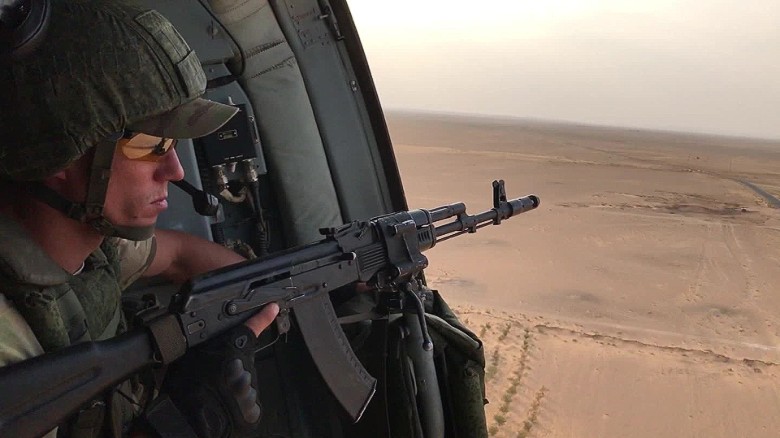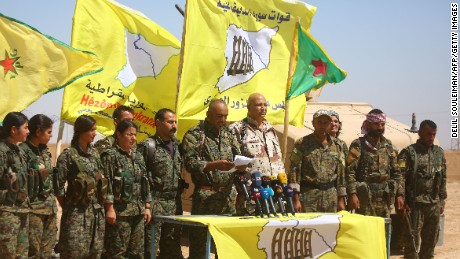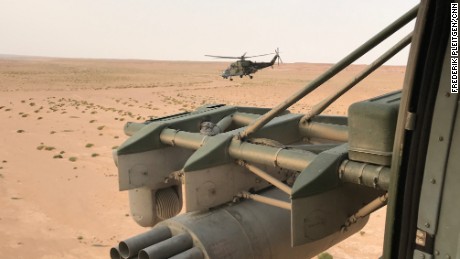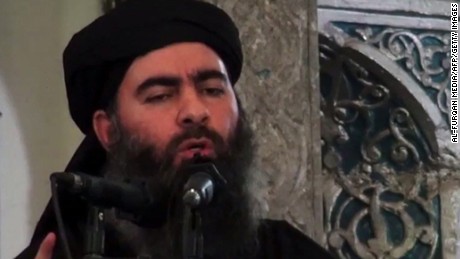Story highlights
- US troops were present when Russian warplanes bombed US backed anti-ISIS fighters in Syria on Saturday
- The tensions between the two sides risks undermining the campaign against ISIS in the Middle Euphrates River Valley
(CNN)Days after a Russian warplane dropped bombs near US troops in Syria, generals from the Russian armed forces and US-led military coalition fighting ISIS held a rare "face-to-face meeting" at an undisclosed location in the region, a spokesman for the US-led coalition said Thursday.
Russian and coalition generals in the region held the meeting in the last couple of days to discuss de-confliction, US Army Col. Ryan Dillon told reporters. The first-of-its-kind meeting was held "at the general officer level," he said, but he did not disclose the names of the participants or the meeting's location, saying there "may be follow-up meetings."
The coalition "will continue to de-conflict with the Russians at every level to ensure that we remain focused on fighting ISIS, all while protecting coalition and our partner forces," Dillon said.
US troops were present when Russian warplanes bombed US-backed anti-ISIS fighters in Syria on Saturday. No US forces were injured, but several local allies were wounded in the attack.
The news of the meeting comes as the Russian Ministry of Defense issued a warning Thursday that its forces would retaliate against the US-backed Syrian Democratic Forces and their US military advisers should any of their forces accompanying Syrian regime troops come under attack. The ministry said that already "the Syrian Democratic Forces and US Special Operations Forces have twice targeted Syrian troops with mortars and rocket artillery."
"Via a special communications channel, a representative of the US command in Al Udeid, Qatar, was strongly warned that any attempts of shelling from the areas where the militants of the Syrian Democratic Forces are based will be immediately curbed," the statement said. "Fire points in these areas will be immediately suppressed by all available means of destruction."
Coalition officials have denied that any such attacks have taken place.
Asked about the Russian warnings during a press appearance before a meeting with the Polish minster of defense at the Pentagon, Secretary of Defense Jim Mattis said recent events did not cause him concern.
"I am not worried. We continue to deal with the Russians in a collaborative way," Mattis said. "We'll sort this out."
Dillon said the statement issued by the Russian Ministry of Defense is "all the more reason why the de-confliction measures, you know, must be discussed." He added that such discussions should include additional operational details to ensure safety.
"As we have seen, the convergence of forces next to one another just increases the need for these de-confliction measures," he said.
While Syrian regime forces had primarily operated on the western side of the Euphrates River and SDF forces on the eastern side, the Russian Ministry of Defense issued a statement Monday saying regime troops, backed by Russian airpower, had crossed over to the river's eastern bank near the city of Deir Ezzor, bringing them in increasingly close proximity to an SDF offensive targeting ISIS elsewhere in the province.
The tensions between the two sides risks undermining the campaign against ISIS in the Middle Euphrates River Valley, where US officials believe the terrorist group has housed much of its leadership as well as up to 10,000 of its fighters.
Several US officials told CNN the strike underscored the risk faced by having Russian, Syrian regime, US and US-backed fighters operating in extremely close proximity in eastern Syria.
Dillon also said that the US-led military coalition has not increased its force protection measures in the wake of Saturday's airstrike against US-backed fighters in Syria, despite the attack's proximity to US special operations forces.
"We have always maintained the capabilities and the over-watch both from the air and forces on the ground," he said, adding, "I would not say there's been an increased amount of force protection measures. I would say that it is where it needs to be and it has been so from the beginning."








